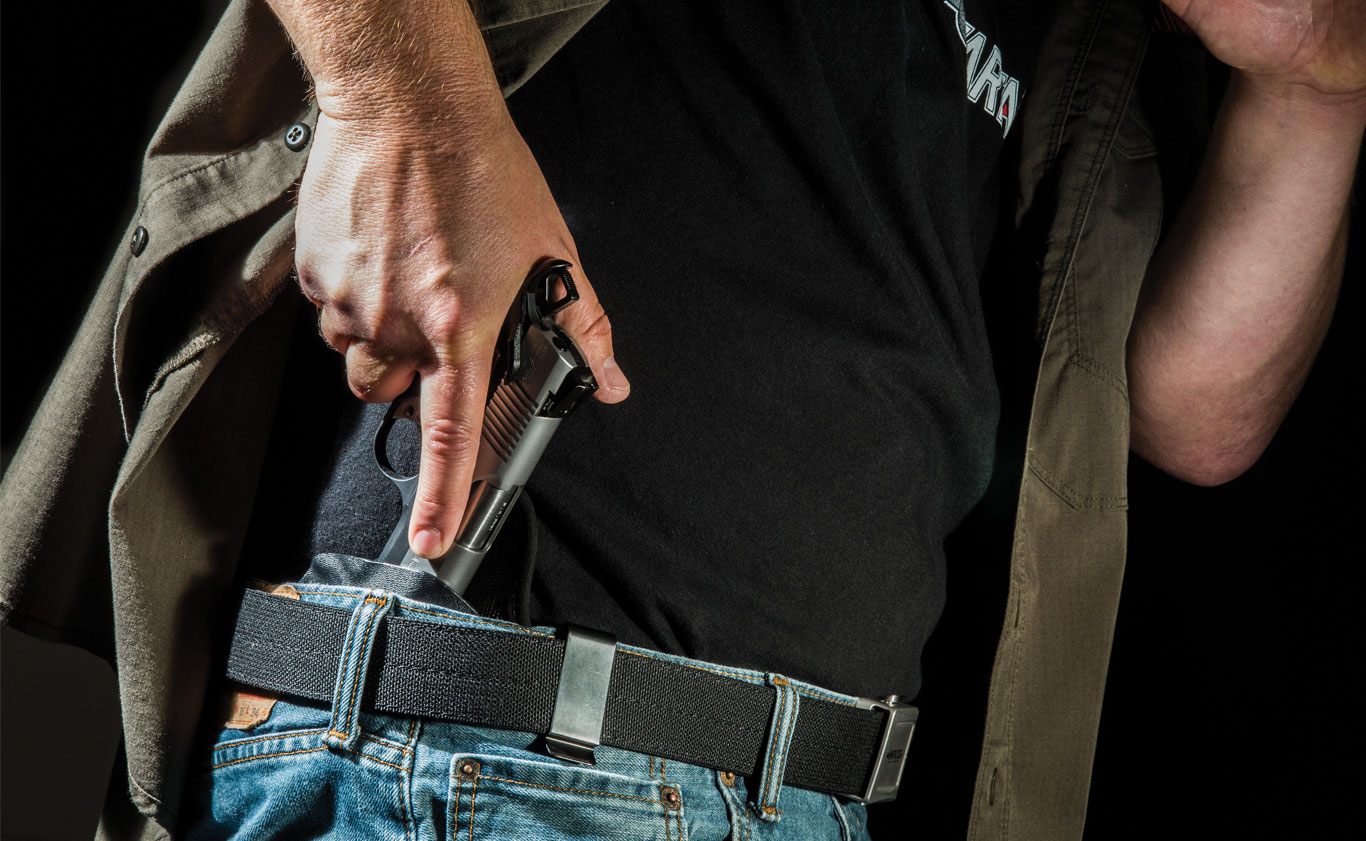
Getting your gun back into its holster is an important skill.
Although drawing your gun in response to a perceived deadly threat is pretty darn important, so is the act of returning your gun safely to the holster. While holstering isn’t particularly exciting, it is critically important. Take it for granted and you’re courting a self-inflicted gunshot would.
If you carry a gun, you need to give careful consideration to when and how to safely holster it. Knowing when to holster is pretty straightforward. When there are no threats looming in your environment, it’s probably time to put your gun away. This is an especially good idea if you have used your gun in defense of yourself or another and the police are responding.
If you’re holding a gun when the police arrive, at best you’ll be dealing with justifiably uneasy cops. In the worst-case scenario, responding officers could mistake you for the perpetrator. This is a tragedy easily avoided by holstering once there is no imminent threat, but you better be certain the fight is over before holstering.
In the police academy, I can remember the firearms instructors cautioning me and my fellow classmates not to be in a hurry to holster. “No one ever won a gunfight by racing to the holster” was the mantra.
We can’t assume that a prescribed number of hits on our target will have the desired effect. Hurriedly holstering your gun when the assailant still poses a deadly threat could be a fatal error.
Hence, keeping your gun on target and being prepared both mentally and mechanically (with your gun loaded and functional) to deliver follow-up shots is a fundamental of marksmanship.
The bottom line is that before holstering, you should make sure the known threat

